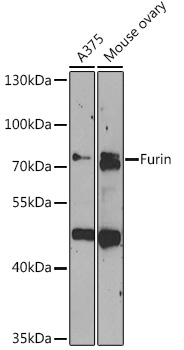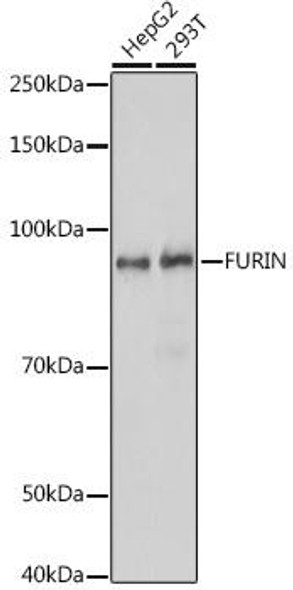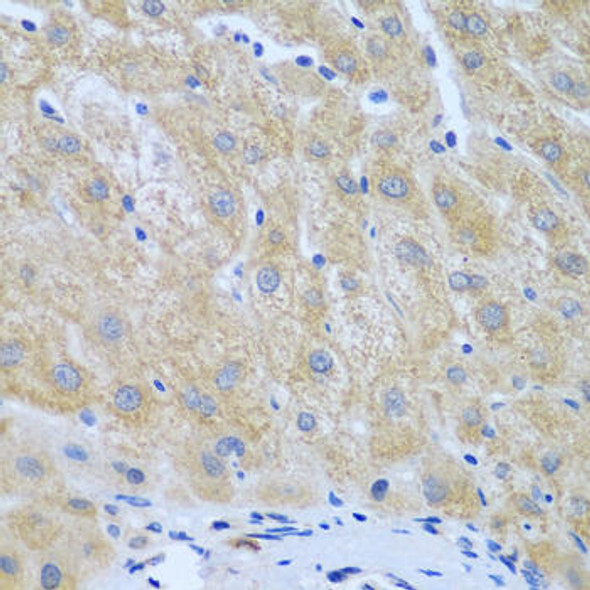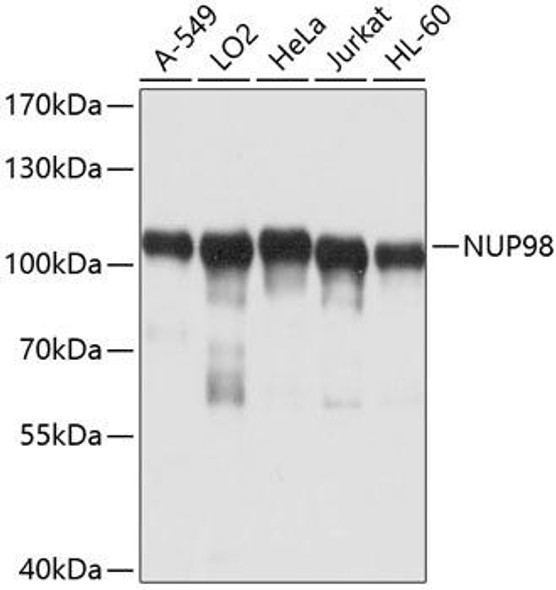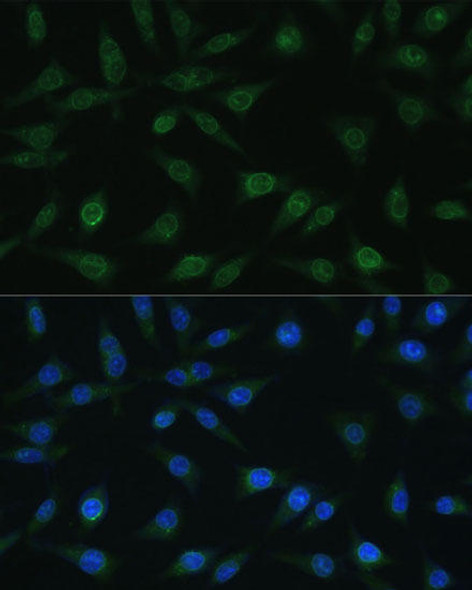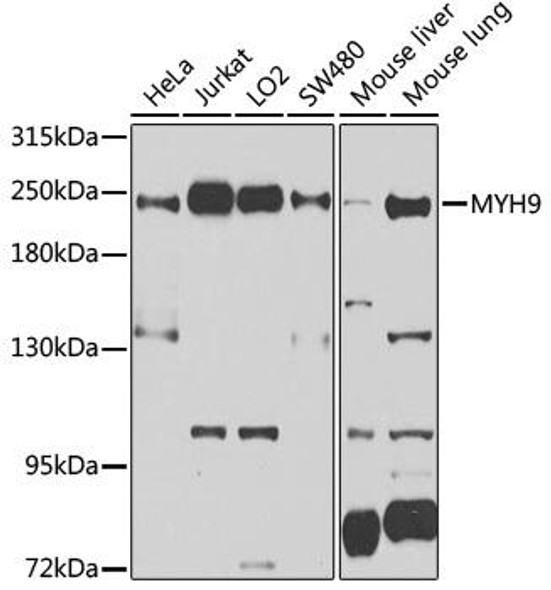Description
Furin Rabbit Polyclonal Antibody (CAB13335)
The Anti-Furin Antibody (CAB13335) is a highly specific tool for research involving the Furin protein, a key enzyme involved in protein processing and activation. This polyclonal antibody, produced in rabbits, demonstrates high reactivity with human samples and has been validated for use in various applications, including Western blot and immunohistochemistry.Furin plays a crucial role in the proteolytic processing of precursor proteins, leading to the activation of bioactive molecules involved in various physiological processes.
Dysregulation of Furin activity has been linked to diseases such as cancer, cardiovascular disorders, and infectious diseases. The Anti-Furin Antibody allows for the detection and analysis of Furin in different cell types, making it an essential tool for researchers studying protein processing pathways and potential therapeutic targets.
| Product Name: | Furin Rabbit Polyclonal Antibody |
| SKU: | CAB13335 |
| Size: | 20uL, 100uL |
| Isotype: | IgG |
| Host Species: | Rabbit |
| Reactivity: | Human,Mouse,Rat |
| Immunogen: | A synthetic peptide corresponding to a sequence within amino acids 700-794 of human Furin (NP_002560.1). |
| Sequence: | AGQR LRAG LLPS HLPE VVAG LSCA FIVL VFVT VFLV LQLR SGFS FRGV KVYT MDRG LISY KGLP PEAW QEEC PSDS EEDE GRGE RTAF IKDQ SAL |
| Tested Applications: | WB IHC-P IF/ICC ELISA |
| Recommended Dilution: | WB,1:500 - 1:2000 IHC-P,1:50 - 1:200 IF/ICC,1:50 - 1:200 |
| Synonyms: | FUR; PACE; SPC1; PCSK3; Furin |
| Positive Sample: | A375,Mouse ovary |
| Conjugate: | Unconjugated |
| Cellular Localization: | Cell membrane, Golgi apparatus, Single-pass type I membrane protein, trans-Golgi network membrane. |
| Calculated MW: | 87kDa |
| Observed MW: | 87kDa |
This gene encodes a member of the subtilisin-like proprotein convertase family, which includes proteases that process protein and peptide precursors trafficking through regulated or constitutive branches of the secretory pathway. It encodes a type 1 membrane bound protease that is expressed in many tissues, including neuroendocrine, liver, gut, and brain. The encoded protein undergoes an initial autocatalytic processing event in the ER and then sorts to the trans-Golgi network through endosomes where a second autocatalytic event takes place and the catalytic activity is acquired. Like other members of this convertase family, the product of this gene specifically cleaves substrates at single or paired basic residues. Some of its substrates include proparathyroid hormone, transforming growth factor beta 1 precursor, proalbumin, pro-beta-secretase, membrane type-1 matrix metalloproteinase, beta subunit of pro-nerve growth factor and von Willebrand factor. It is thought to be one of the proteases responsible for the activation of HIV envelope glycoproteins gp160 and gp140, and may play a role in tumor progression. Unlike SARS-CoV and other coronaviruses, the spike protein of SARS-CoV-2 is thought to be uniquely cleaved by this protease. Alternative splicing results in multiple transcript variants.
| Purification Method: | Affinity purification |
| Gene ID: | 5045 |
| Storage Buffer: | Store at -20℃. Avoid freeze / thaw cycles.Buffer: PBS with 0.02% sodium azide,50% glycerol,pH7.3. |


